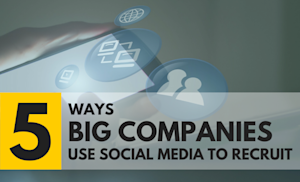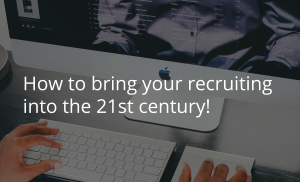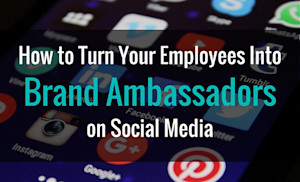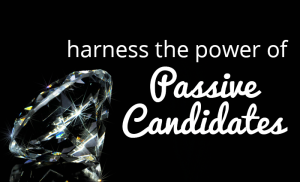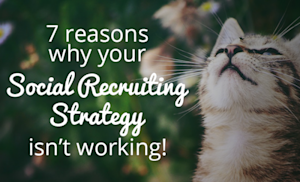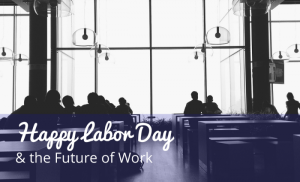Surefire tips for upgrading your recruitment style.
With social media use in the professional world having become standard, many companies are using it as a valuable recruiting tool. Platforms like Facebook, Twitter, and LinkedIn offer employers a pool of prospective employees that they may fail to reach through traditional, often passive, methods.
One survey from 2014 suggests that a whopping 93% of employers are or are planning to recruit employees via social media platforms. What does this figure mean for us? It means that there is a treasure trove of anecdotal data with regard to what social media recruiting strategies work, which brands have enjoyed the most recruiting success, and what methods garner the most user engagement. Following the examples set by major corporations like Home Depot, Nestlé, and Cadbury, here are a few major ways to help your recruiting campaign take off.
1. Promote Sharing
A cornerstone of the social media experience, sharing can help your recruiting efforts travel far and wide. Encourage your followers to retweet your posts or tag friends who they think would be interested. When you get some sharing activity going on, take a page from Nestlé’s book and thank your grassroots marketers!
2. Take the Campaign Cross-Platform
For professional recruiting purposes, LinkedIn tends to be the go-to platform. LinkedIn users are there to network, job seek, showcase their skills, and promote their companies. So it’s an obvious choice. But will it yield the most success? Not necessarily. Stand alone, LinkedIn is more effective for recruiting than Facebook or Twitter, but if you want to maximize your recruiting success, use at least all three platforms. You’ll have a hard time finding a company that only uses one platform these days, and for a good reason.
3.Interact with Followers
Social media pages are a flurry of activity. Posts and comments filter through at all hours of the day. Use this activity as an opportunity to reach out to users directly and publicly. Home Depot sets the stage on this front, with its rapid-fire responses to user comments and questions. Your followers will appreciate you going the extra mile by showing you care.
You can even take it a step further by signing your posts. While many companies’ social media pages aren’t handled by their CEOs, it’s a pleasant surprise to drop in every once in a while. Hillary Clinton’s 2016 presidential campaign, while not necessarily used to recruit employees, does a great job of adding her personal touch to platforms no one expects her to engage with directly. A simple “-H” at the end of her posts and tweets makes them stand out from tweeting-as-usual.
Marriott put its own spin on personalized interactions will their “Career Chats.” Career Chats are essentially Q&A forums in which the public can ask questions about Marriott employment, and receive real-time answers from Marriott employees who use their real names.
4.Peacock, Just A Little
Show off your company’s unique attributes through consistent social media posts. Just try not to sound like you’re bragging too much! Share what your company can offer its employees that many others don’t. Do you have extended parental leave? Do you offer student loan repayment? Or perhaps your company offers less tangible benefits, like a comfortable office culture, diverse employee base, or a superior work-life balance. Dell’s social media pages boast the community culture it fosters, highlighting the genuine appreciation the company has for its employees. To further the impact of your posts, add another layer of human element a la fast-food giant Taco Bell. Taco Bell succeeds in highlighting company culture through sharing photos of their employees—at all levels—enjoying themselves at work. Whatever it is that sets you apart, your followers want to hear about it.
5.It Doesn’t Have to Be All Recruiting, All the Time
As you might expect, success in social media recruiting is positively correlated with the size of your audience. And what is one of the best ways to build your audience? Broaden your content. Companies that are in the habit of posting text-only, recruitment-oriented posts are more likely to experience follower attrition. Other companies, like Cadbury, have adopted a more holistic approach to publishing content. For example, Cadbury’s ongoing campaign (#FreeTheJoy) features photos and videos from users sharing their joys. While not strictly chocolate-related, such media is successful in bolstering follower counts. Cadbury melds this hashtag-happy campaign with regular relevant product posts, such as recipes that use Cadbury chocolate. Their multilayer approach has paid off in multiple areas from marketing to community engagement, and as a result, also in recruiting.
Big companies can offer a vast amount of insight into structuring effective social media recruiting campaigns. While you can gain inspiration from them, one of the most important elements to remember is creativity and originality. Those are the aspects that your prospects will remember, and what will help your branding stand out from other campaigns.
David Grover is a Communications Manager at Timeo, a useful tool for businesses in the UK. He’s also a freelance career coach, who’s always eager to share his experience. In his free time he enjoys travelling.
Read More